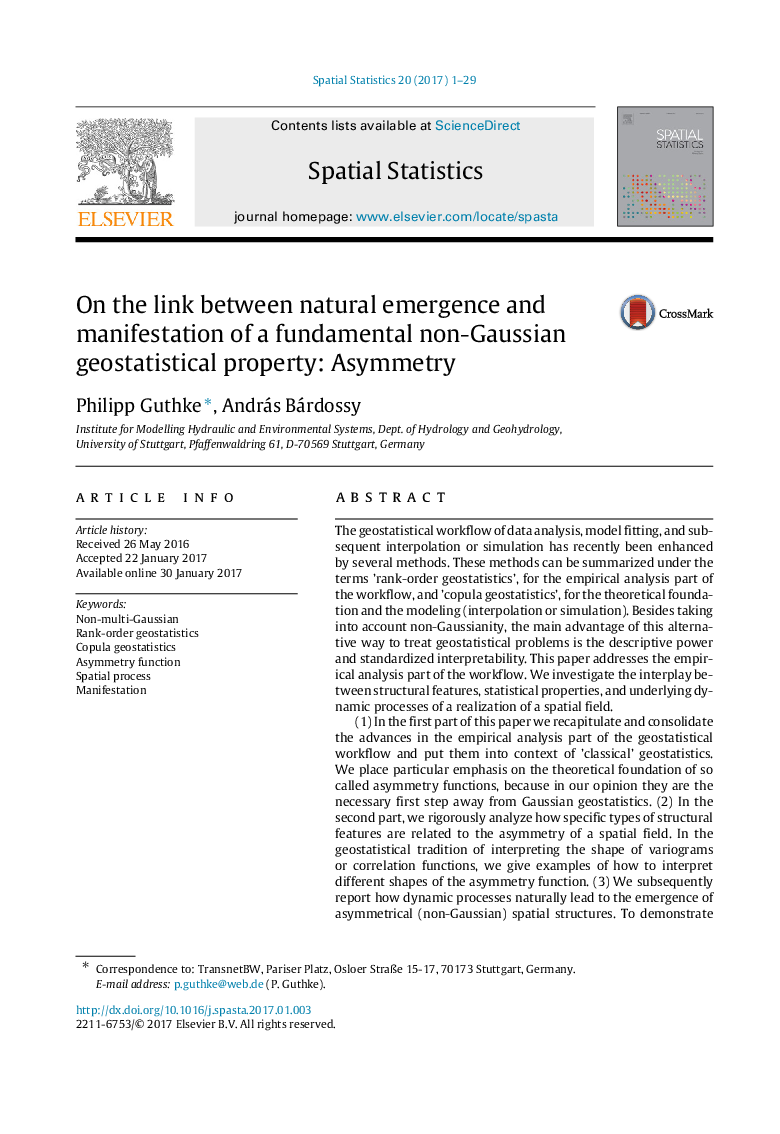| Article ID | Journal | Published Year | Pages | File Type |
|---|---|---|---|---|
| 5119010 | Spatial Statistics | 2017 | 29 Pages |
The geostatistical workflow of data analysis, model fitting, and subsequent interpolation or simulation has recently been enhanced by several methods. These methods can be summarized under the terms 'rank-order geostatistics', for the empirical analysis part of the workflow, and 'copula geostatistics', for the theoretical foundation and the modeling (interpolation or simulation). Besides taking into account non-Gaussianity, the main advantage of this alternative way to treat geostatistical problems is the descriptive power and standardized interpretability. This paper addresses the empirical analysis part of the workflow. We investigate the interplay between structural features, statistical properties, and underlying dynamic processes of a realization of a spatial field.(1) In the first part of this paper we recapitulate and consolidate the advances in the empirical analysis part of the geostatistical workflow and put them into context of 'classical' geostatistics. We place particular emphasis on the theoretical foundation of so called asymmetry functions, because in our opinion they are the necessary first step away from Gaussian geostatistics. (2) In the second part, we rigorously analyze how specific types of structural features are related to the asymmetry of a spatial field. In the geostatistical tradition of interpreting the shape of variograms or correlation functions, we give examples of how to interpret different shapes of the asymmetry function. (3) We subsequently report how dynamic processes naturally lead to the emergence of asymmetrical (non-Gaussian) spatial structures. To demonstrate these findings, we investigate the manifestation of different spatial data sets (land surface elevation, groundwater contamination, grades of an undergraduate exam) and relate the non-Gaussian structural features to the underlying dynamic processes. Numerical process models are utilized to manifest evidence of how realistic processes naturally lead to complex non-Gaussian structures.The key purpose of this paper is to show that asymmetry is a fundamental geostatistical property and a result of different kinds of spatial processes.
